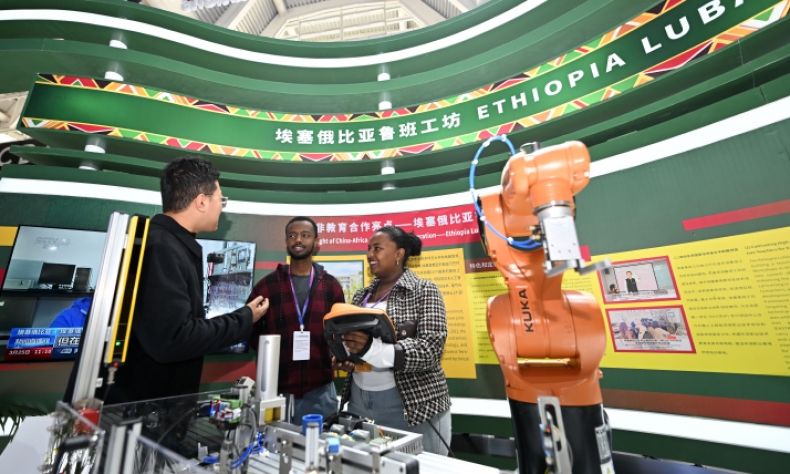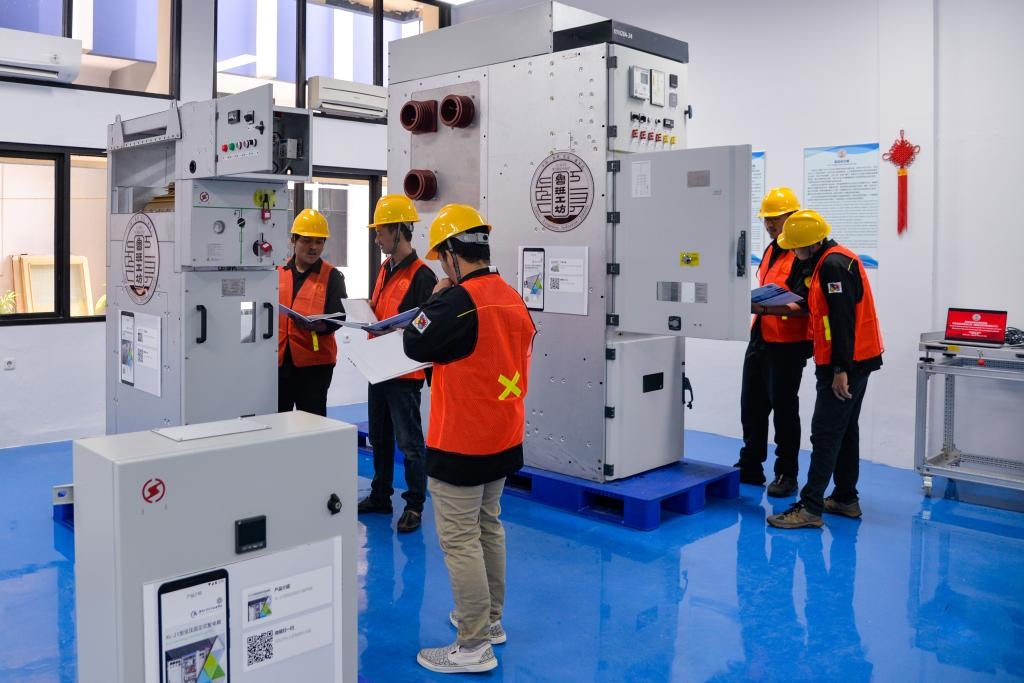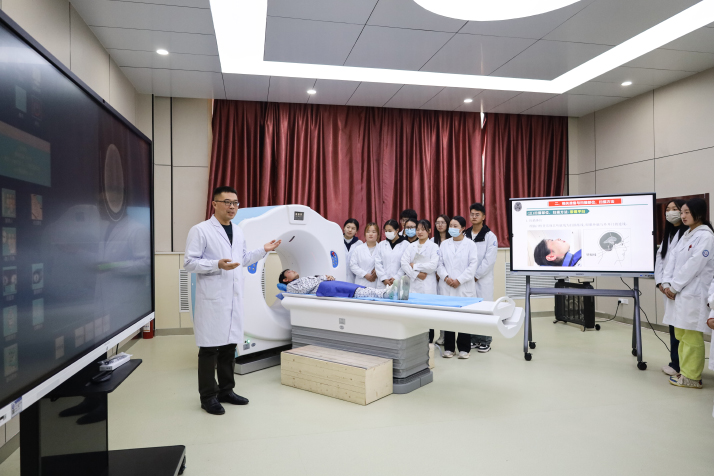How China Is Revolutionizing Vocational Training with Digital Innovation

Cutting-edge technologies such as AI, big data and digital platforms are reshaping the way skills are taught and learned, empowering the vocational training sector.
Imagine learning how to take care of the elderly in a virtual nursing home—where your mistakes won’t hurt anyone, but your skills must be nothing short of perfect to advance. At Weiyang District Vocational Education Center, a vocational high school in Xi’an, Shaanxi Province, students train with virtual reality (VR) before serving a real senior, and the results are surprisingly good.
In one scenario during a training session for the Smart Health and Senior Care program, students learn how to respond to an incident involving an elderly woman, who is 70 years old and has a 20-year history of high blood pressure. After she accidentally falls while leaving her room, a caregiver rushes to her side. The students are prompted to act as caregivers, following emergency response protocols.
Once training tasks are assigned, the students put on their VR headsets and use controllers to “enter” a virtual nursing home, rehearsing every care-giving detail with lifelike precision.
“I heard about VR games before, but I didn’t expect my school to use VR technology. With the VR headset on, I can immerse myself in different care service scenarios,” Ma Mengyang, a student at the school, told local news portal Sxworker.com.
“The virtual simulation course is new this semester. This immersive, experiential teaching method enables students to practice their skills in a virtual setting, effectively combining theory and hands-on training, thereby enhancing their care-giving abilities for future elderly care work,” explained lecturer of the course Huang Qi, who monitors each student’s training progress in real time on her computer screen.
This virtual nursing home exemplifies the transformation within China’s vocational education system, which is being fundamentally enhanced by cutting-edge technologies such as AI, big data and digital platforms. These innovations are reshaping the way skills are taught and learned, empowering the vocational training sector.

AI in the classroom
Many vocational schools are introducing new technologies and equipment to enhance teaching in classrooms.
“After putting on the VR headsets, I saw a blue sky and an endless ocean. I was on a ship, preparing to perform welding tasks, and the entire scene seemed very real,” said Tian Yufei, a first-year student in the Automotive Maintenance and Application program at Xi’an Experimental Secondary Vocational School, another vocational high school in Xi’an, describing his training experience in the virtual simulation training classroom.
Tian practiced a horizontal welding technique taught by his instructor Ding Dongkui, carefully welding a crack. The system then provided a detailed evaluation of his training. The instructor highlighted common issues and suggested improvements based on the evaluation.
In class, students also took turns “spray painting car doors.” Wearing VR glasses and holding simulation training devices, they found themselves in a repair workshop, carefully adjusting the spray angle to paint the doors. The results were visible on a large screen.
“With these virtual simulation training devices, students can repeatedly practice standardized operations, reducing material waste and being environmentally friendly. In the future, when they train on actual objects, it will be much easier,” Ding said.
At Shanghai Caoyang Vocational School, a secondary vocational school in Shanghai, English teacher Liu Yueya has transformed her language lesson themed on food and beverages into an AI-powered learning experience by teaming up with an AI-Generated Content (AIGC) training platform. The platform creates personalized learning paths by analyzing student performance on pre-class quizzes, then tailoring instructional materials to address knowledge gaps.
“The AI system provides immediate feedback on quiz results, helping students quickly identify their weak areas before class even begins,” Liu explained about her innovative teaching approach.
During lessons, students engage with dynamic AI-generated video dialogues that bring language concepts to life, followed by interactive exercises using AI-created visual materials.
Liu observed that “the fusion of AIGC tech with English classes has not only improved teaching effectiveness but also stimulated vocational students’ interest in learning English, creating a more open, interactive and personalized learning environment.”
Zhang Wenli, head of Chongqing Vocational College of Transportation, a higher education institution in Chongqing Municipality, believes that with the empowerment of AI, vocational education can achieve major advancements in areas such as programs, courses, teachers, school environment and teaching materials.

Among these, it is essential to develop programs in light of industrial needs to boost both national and regional economic development. The college has therefore partnered with leading e-commerce platform JD.com to analyze industry talent shortage using AI, creating a data analysis platform for modern management. This platform forecasts job demands and skill requirements in the next three years, ensuring students’ skills align with industry developments and enhance their competitiveness.
Additionally, the college has applied AI technology in programs such as rail transportation and smart manufacturing. By leveraging big data and AI, it can track industry trends and talent needs in real time, dynamically adjusting course content and training models.
Global reach
Technology-enhanced vocational education in China is transforming global skills development and international educational cooperation, as the country shares its innovative approaches beyond its border. Its “vocational education going global” strategy represents a commitment to shared global development under initiatives like the Belt and Road Initiative, a strategy proposed by China to boost connectivity along and beyond the ancient Silk Road routes.
One example is the Uzbekistan Luban Workshop, a collaboration between Tianjin Maritime College and Tashkent State Transport University. Its programs in information technology and modern logistics management have used the latest smart logistics simulation system from Tianjin Maritime College to train Uzbek students.
The internationalization of China’s digital vocational education encompasses several key aspects. These include establishing overseas campuses that create physical vocational training centers, bringing Chinese curricula and technologies to partner countries.
Additionally, China exports digital platforms that provide online learning systems and smart education solutions tailored to overseas markets. The country also contributes to global vocational education by developing standards and frameworks. Furthermore, it facilitates cross-border faculty and student exchanges through digital collaboration platforms.
 Facebook
Facebook
 Twitter
Twitter
 Linkedin
Linkedin
 Google +
Google +










